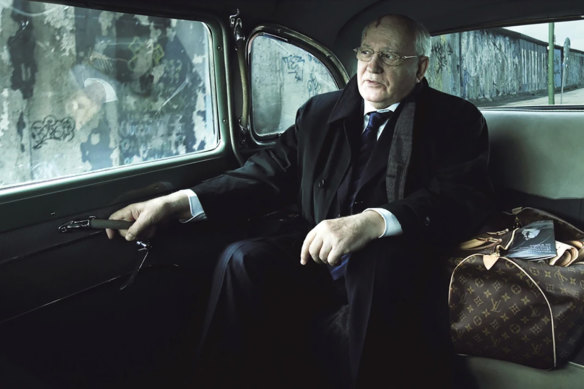In 1997, a year after his failed run for Russian president was viewed as a national joke, Mikhail Gorbachev resorted to making a TV ad for Pizza Hut to earn money for his charitable foundation.
For a man described in the hours after his death on Wednesday as the most significant person in the second half of the 20th century, his tv commercial appearance was more than just a grab for money.
The Pizza Hut campaign
The ad featured the last leader of the Soviet Union sitting down at a Moscow outlet of a major US chain Pizza Hut with his granddaughter to enjoy one of the largest icons of capitalism – American fast food.
At a nearby table, another group debated the former leader’s legacy. The older man blames him for Russia’s “economic confusion”, “political instability” and “complete chaos” while the younger man rebukes, saying Gorbachev gave them “opportunity”, “hope” and “freedom”.
Their argument is interrupted by a woman who says it is because of him that Russia has Pizza Hut, prompting diners to stand and salute him with a slice saying “Hail to Gorbachev”.
Gorbachev, who never actually takes a bite of the pizza in the minute-long commercial, was reportedly paid $US1 million for his appearance. The ad was broadcast internationally but never shown in Russia, where he was deeply unpopular at the time having polled just 1 per cent of the vote in the 1996 Russian presidential elections.
He said at the time he needed the money to fund his research institute.
“I’m in the process of creating a library and a perestroika archive, and this project requires certain funds,” Gorbachev said at the time. “Perestroika (restructuring) gave impetus to Russia and to the whole world.
“It is very important that everything that happened be preserved in these two centres.”
Blamed for the collapse of the Soviet Union, his former allies had even begun deserting him and making him a scapegoat for the country’s troubles at the time of the advertisement’s filming.
“In the ad, he should take a pizza, divide it into 15 slices like he divided up our country, and then show how to put it back together again,” quipped Anatoly Lukyanov, a one-time Gorbachev supporter.
The Louis Vuitton campaign
Gorbachev said he had knocked back other endorsements before agreeing to film the Pizza Hut ad. In 2007 he appeared in another campaign this time for the French luxury label Louis Vuitton.
Shot by photographer Annie Leibovitz, the campaign was based on travel, with Gorbachev featured in the backseat of a car with a Vuitton bag by his side and the Berlin Wall in the background.
That campaign was also not without incident.
Poking out of the designer bag was a magazine with the headline “Litvinenko’s murder: They wanted to give up the suspect for $7,000.”
That headline on the magazine, New Times – a liberal Russian publication that regularly criticises the Kremlin, was referencing Alexander V Litvinenko, a former KGB spy who died in November 2006 after being poisoned.
Litvinenko accused Russian President Vladimir Putin of orchestrating his murder.
Former USSR. leader Mikhail Gorbachev passes by the Berlin Wall in the advertisement shot by Annie Leibovitz. Credit:AP
The poisoning in London was one the first actions of aggression beyond Russia’s borders attributed to Putin’s leadership.
Louis Vuitton and ad agency Ogilvy & Mather however dismissed any significance of the magazine headline in their campaign.
Yet the picture stood as an uncomfortable reminder of the drift of the Kremlin in the years since Gorbachev left it.
Get a note directly from our foreign correspondents on what’s making headlines around the world. Sign up for the weekly What in the World newsletter here.
Most Viewed in World
From our partners
Source: Read Full Article
